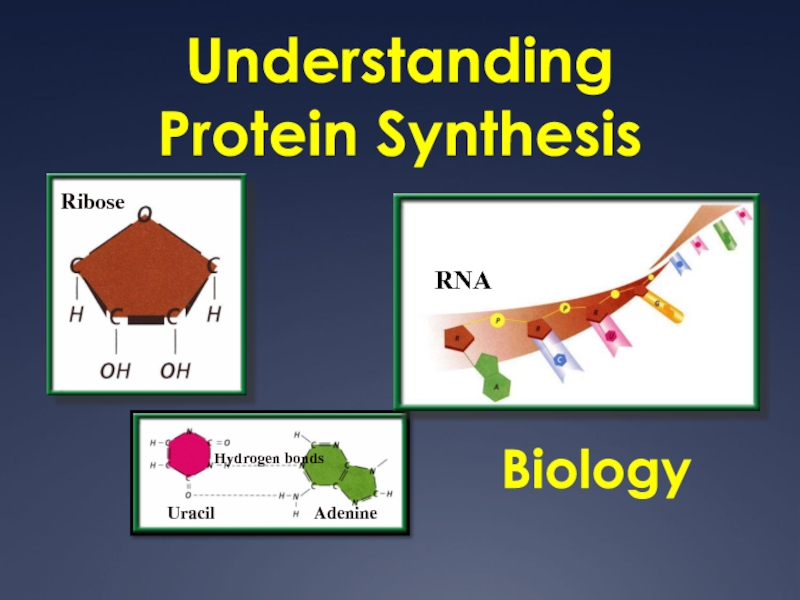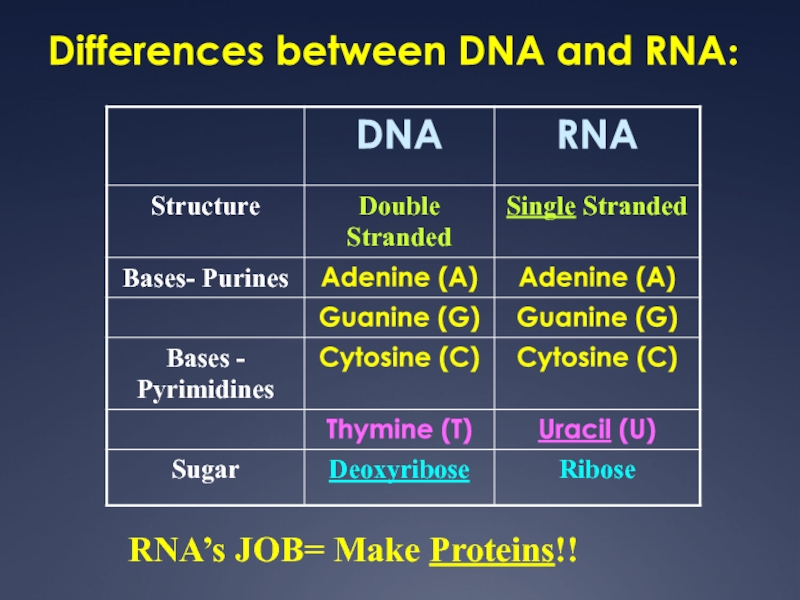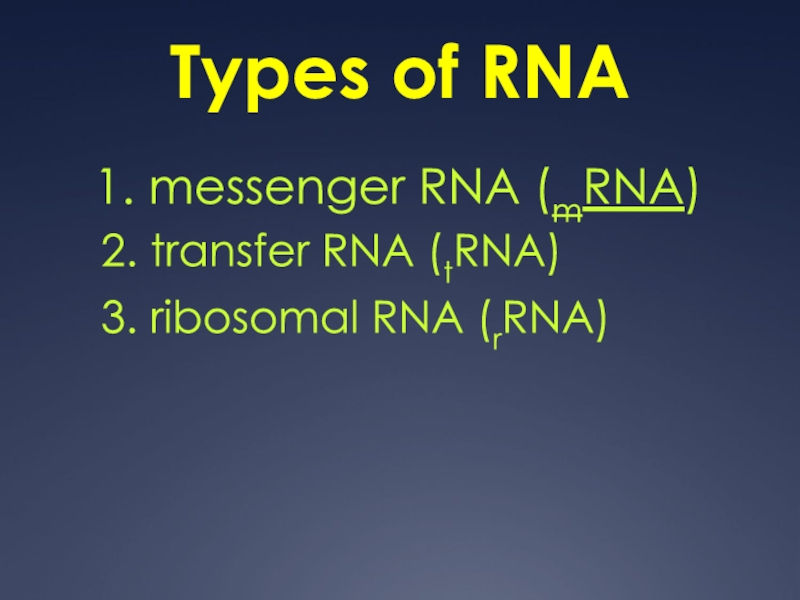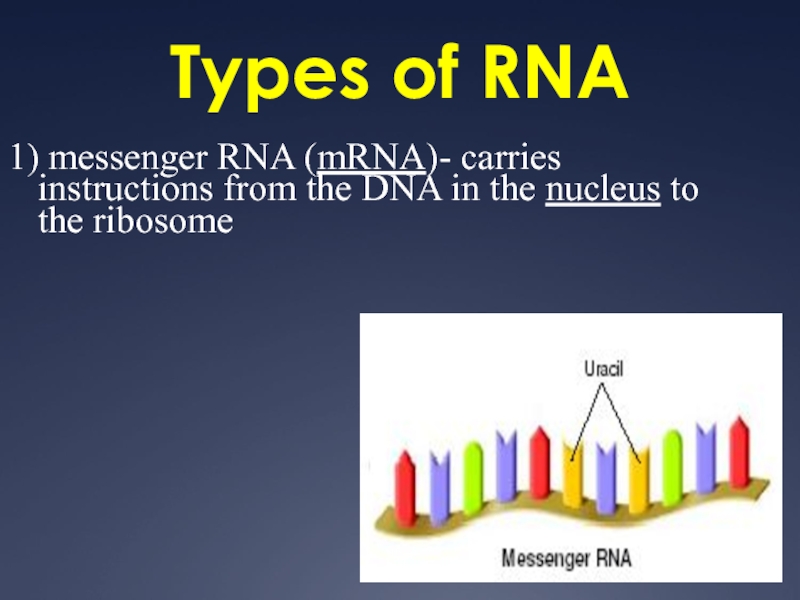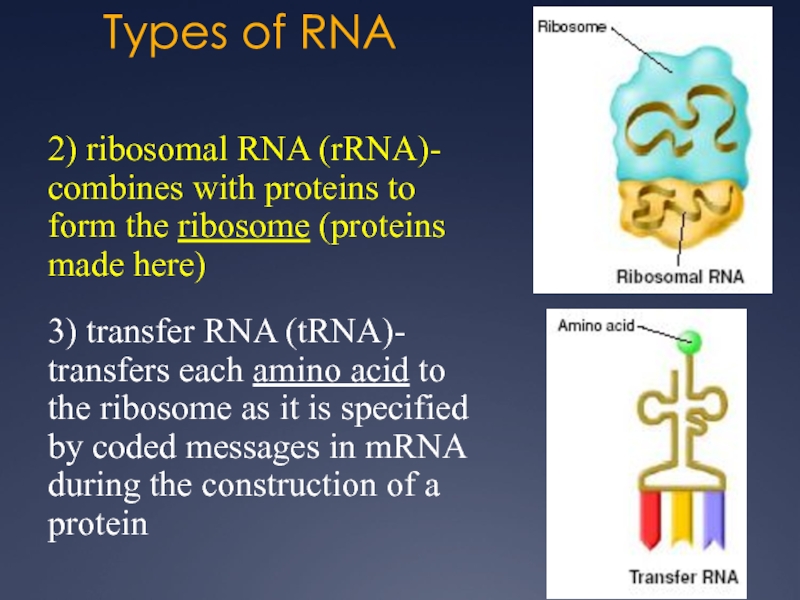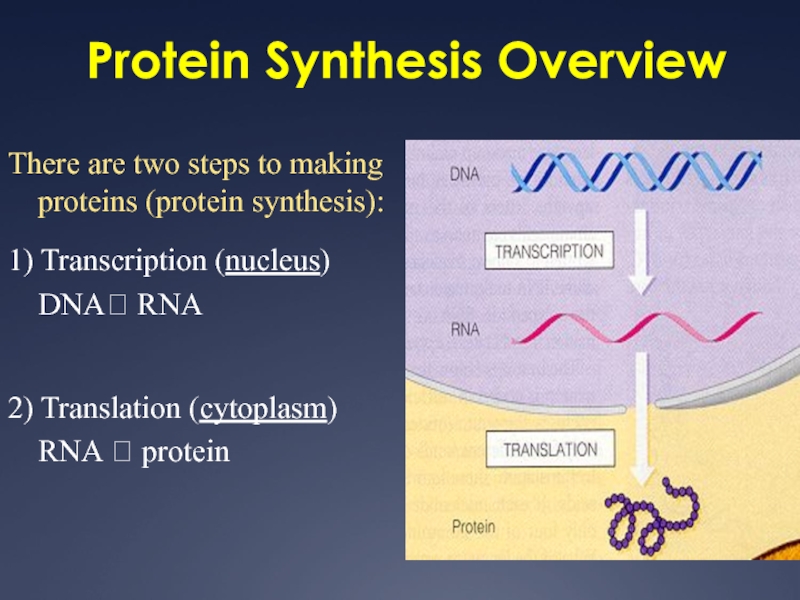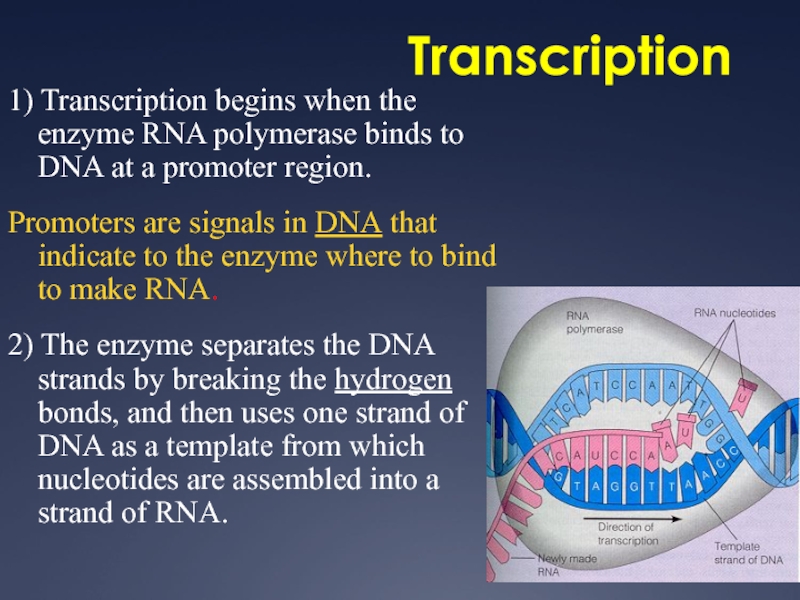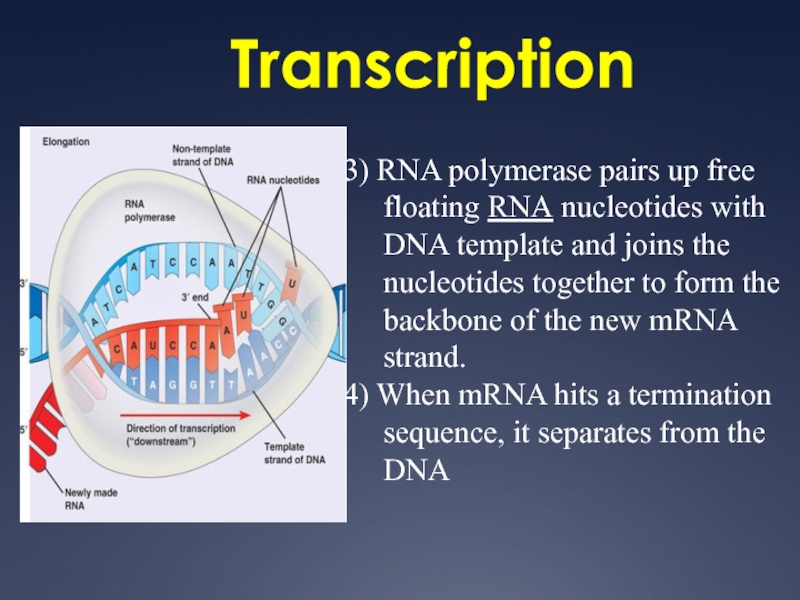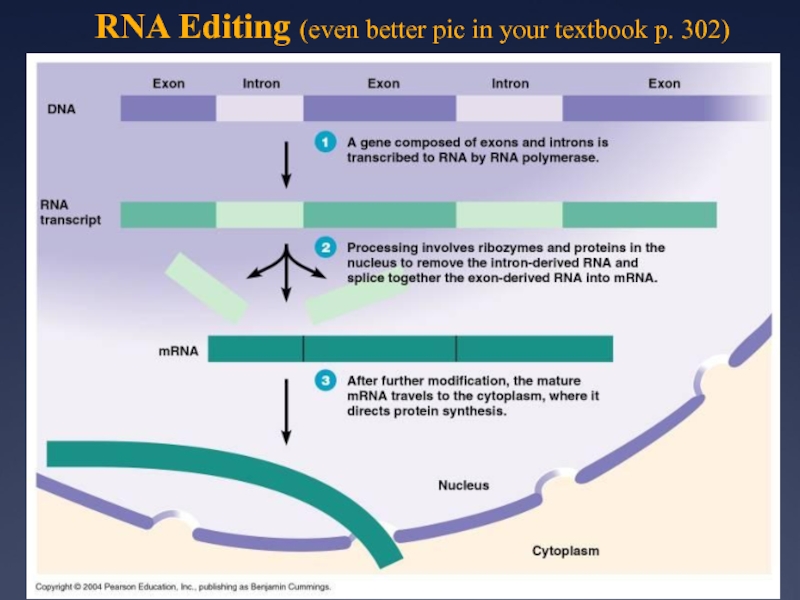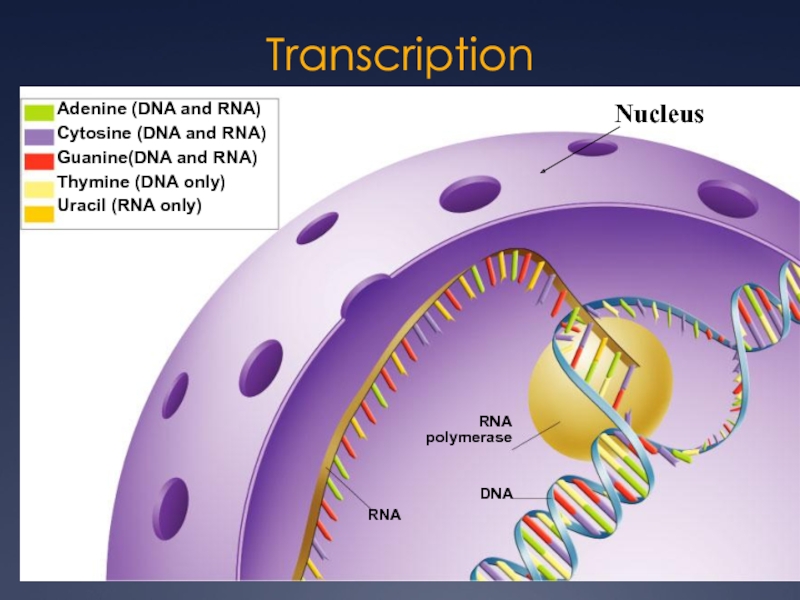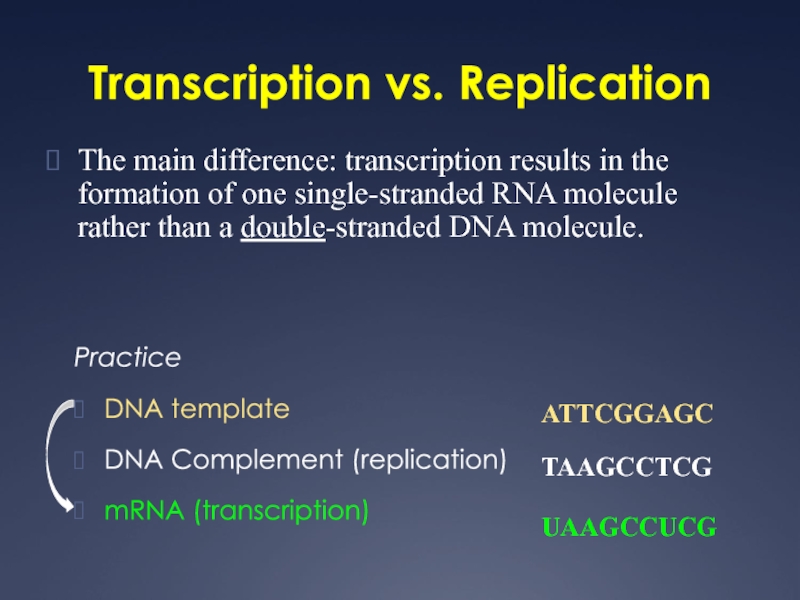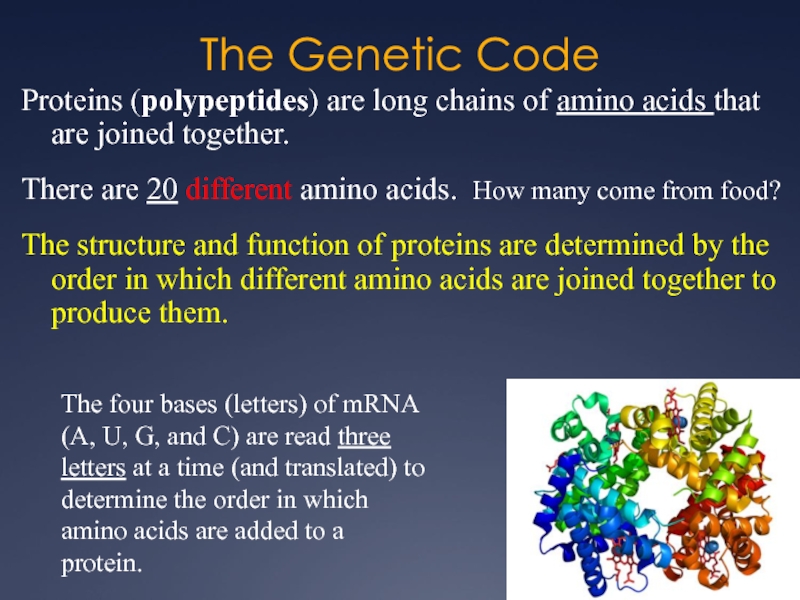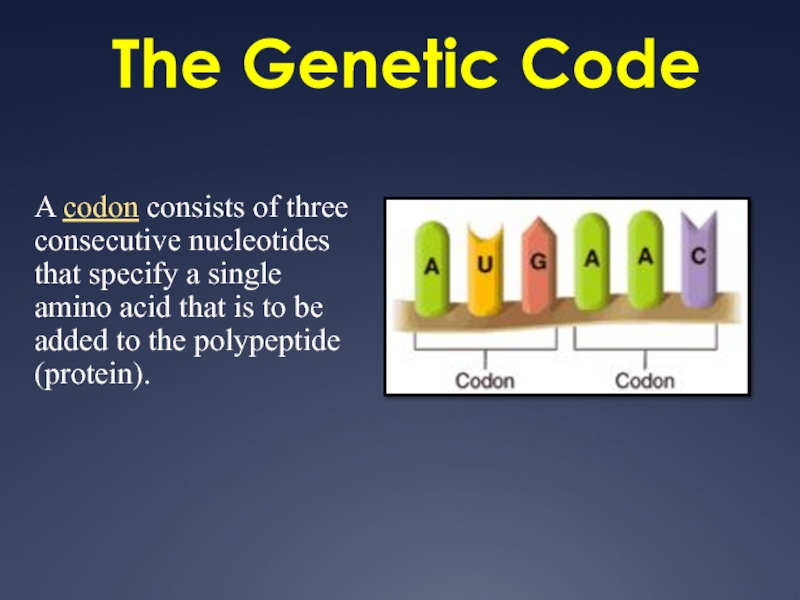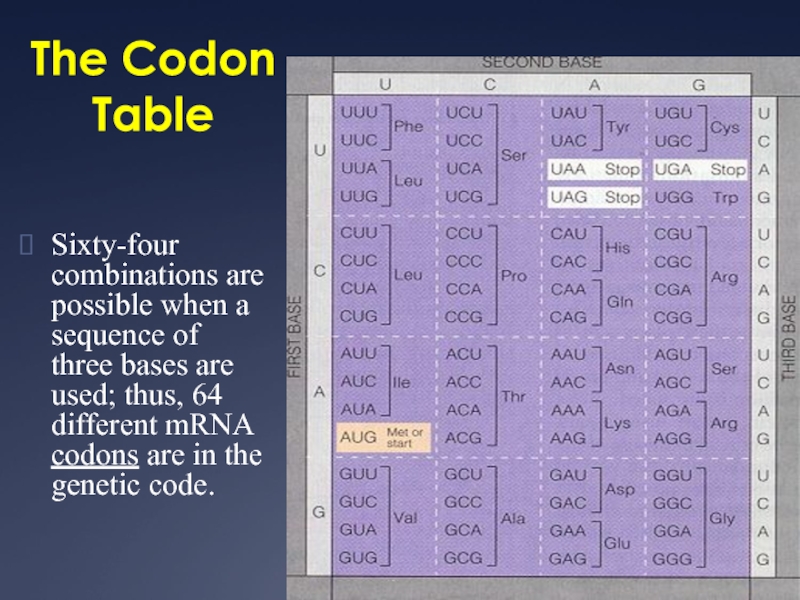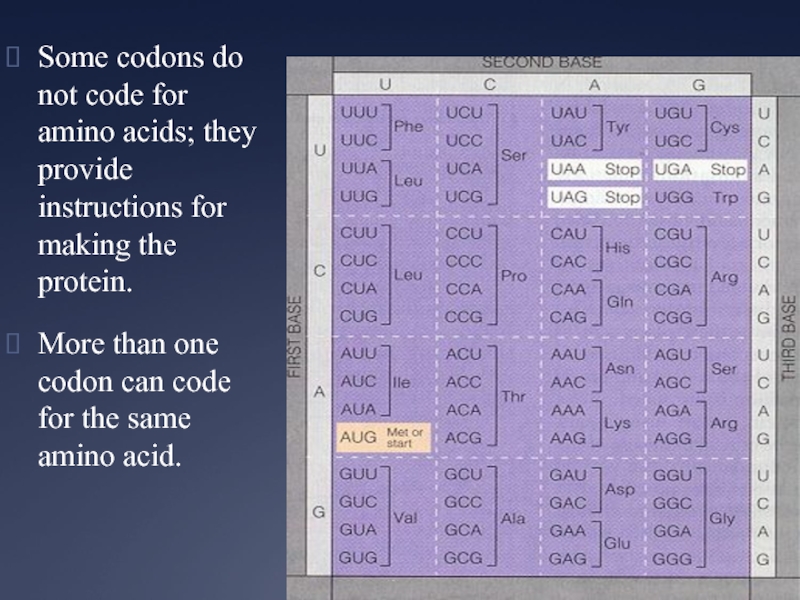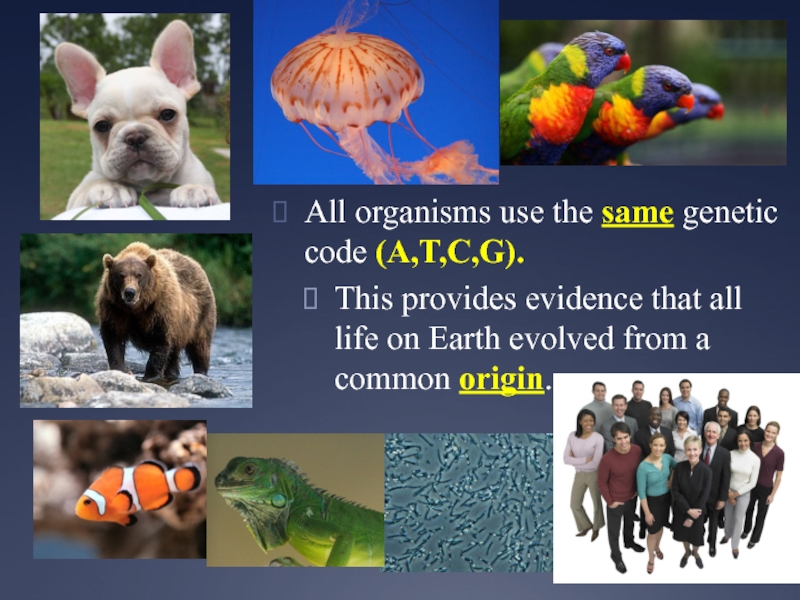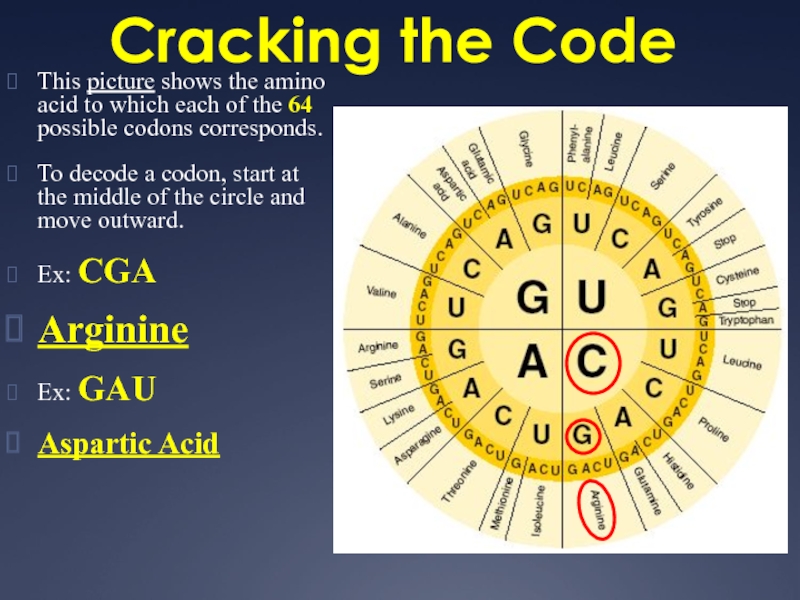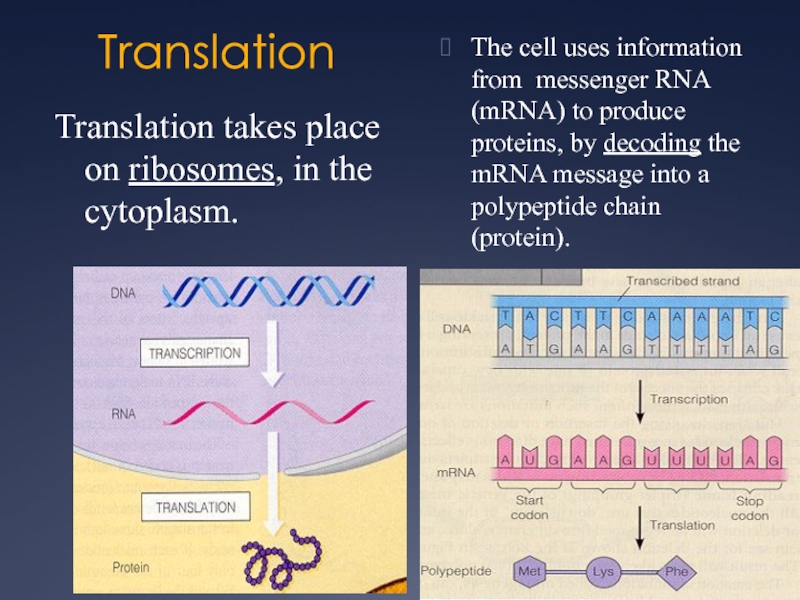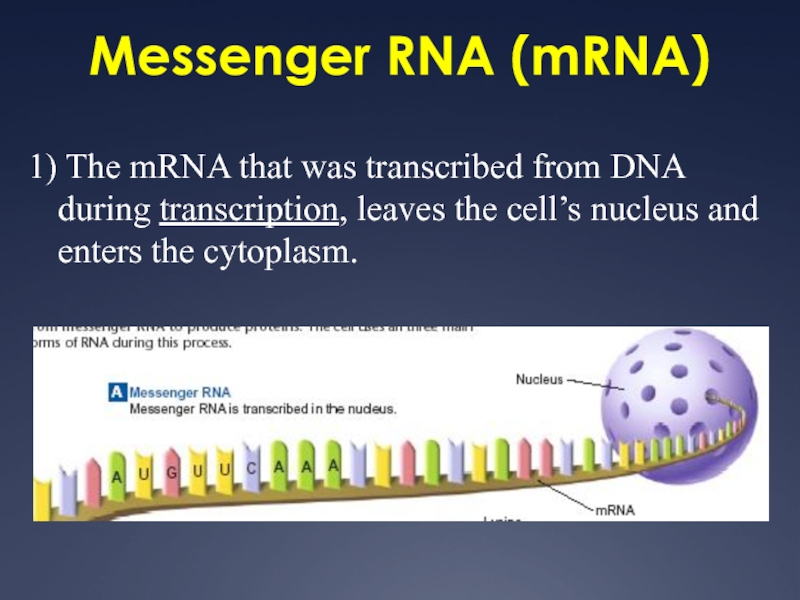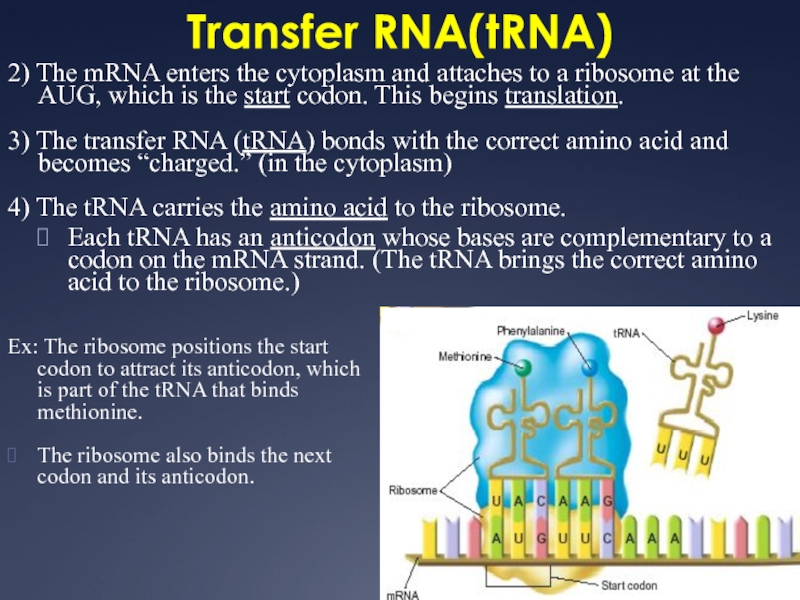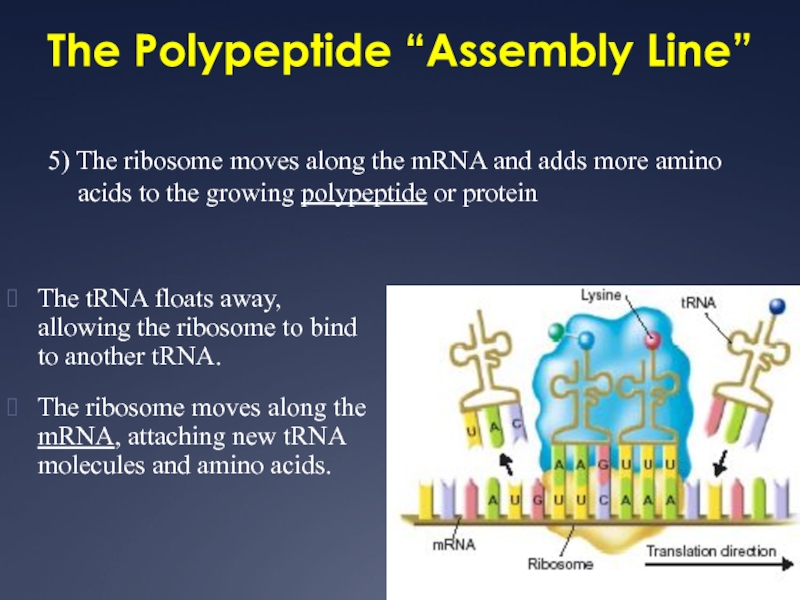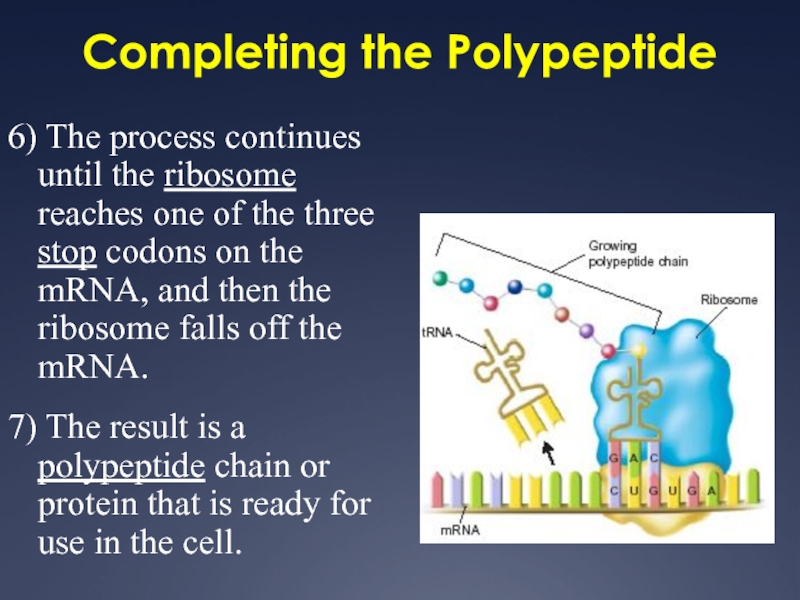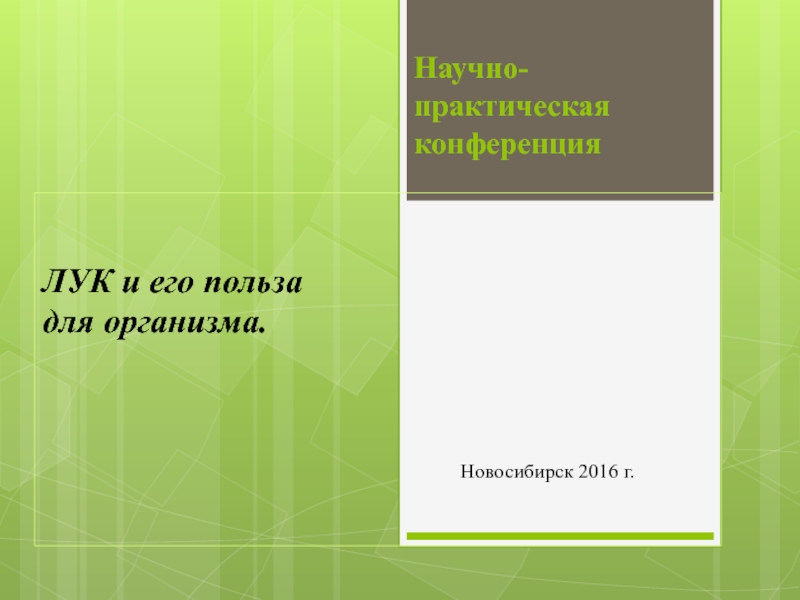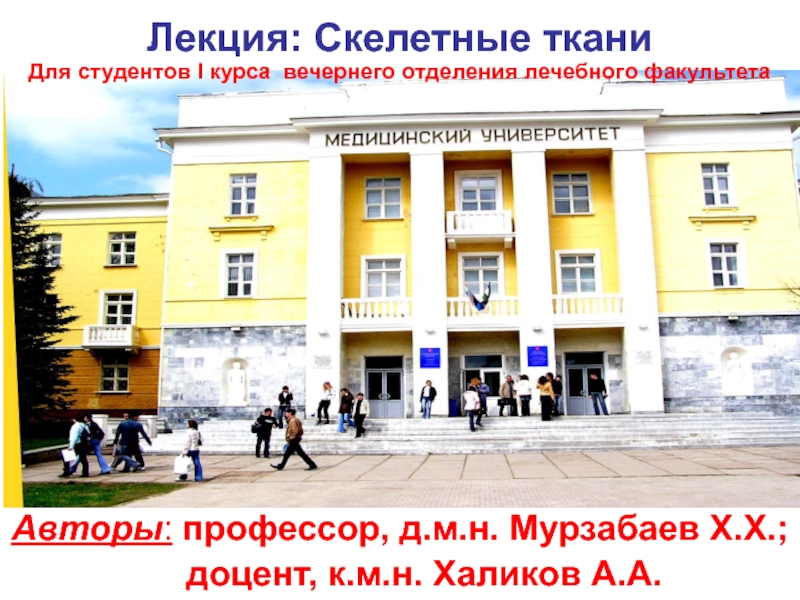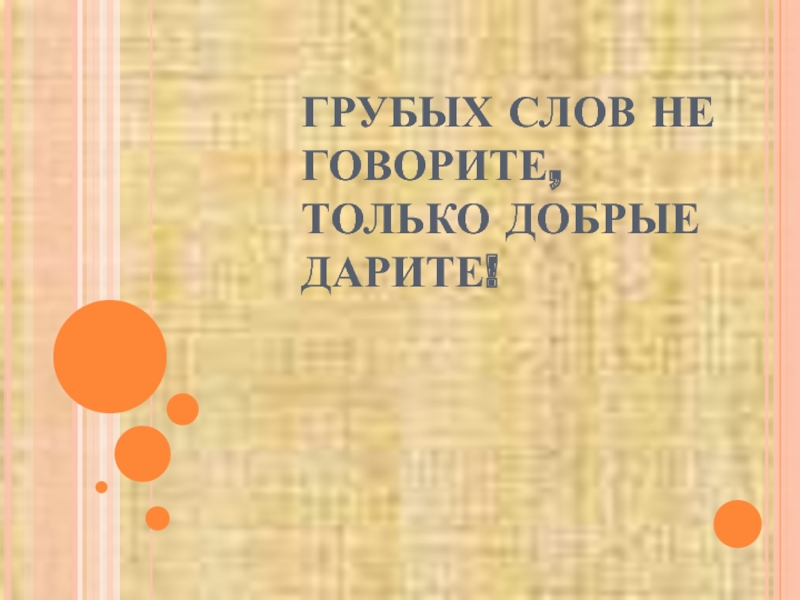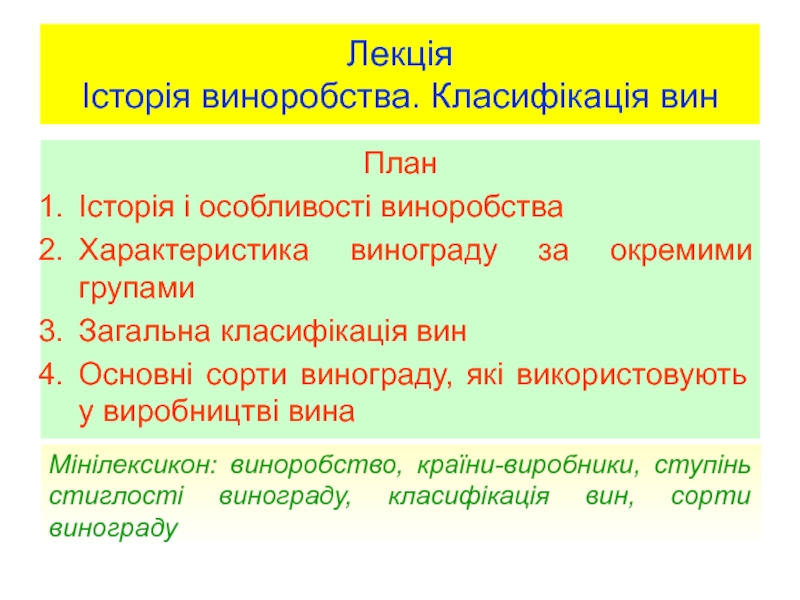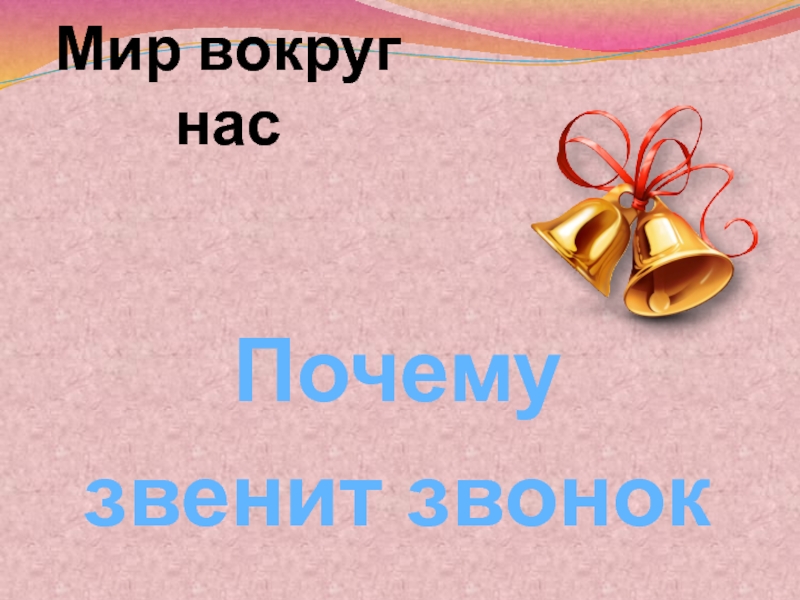- Главная
- Разное
- Дизайн
- Бизнес и предпринимательство
- Аналитика
- Образование
- Развлечения
- Красота и здоровье
- Финансы
- Государство
- Путешествия
- Спорт
- Недвижимость
- Армия
- Графика
- Культурология
- Еда и кулинария
- Лингвистика
- Английский язык
- Астрономия
- Алгебра
- Биология
- География
- Детские презентации
- Информатика
- История
- Литература
- Маркетинг
- Математика
- Медицина
- Менеджмент
- Музыка
- МХК
- Немецкий язык
- ОБЖ
- Обществознание
- Окружающий мир
- Педагогика
- Русский язык
- Технология
- Физика
- Философия
- Химия
- Шаблоны, картинки для презентаций
- Экология
- Экономика
- Юриспруденция
Understanding Protein Synthesis презентация
Содержание
- 1. Understanding Protein Synthesis
- 2. Differences between DNA and RNA: RNA’s JOB= Make Proteins!!
- 3. 1. messenger RNA (mRNA) Types of
- 4. Types of RNA 1) messenger RNA (mRNA)-
- 5. Types of RNA 2) ribosomal RNA
- 6. Protein Synthesis Overview There are two steps
- 7. Transcription 1) Transcription begins when the
- 8. Transcription 3) RNA polymerase pairs up free
- 9. Transcription 5) mRNA editing occurs in the
- 10. RNA Editing (even better pic in your textbook p. 302)
- 11. Transcription Nucleus
- 12. Transcription vs. Replication The main difference: transcription
- 13. The Genetic Code Proteins (polypeptides) are long
- 14. The Genetic Code A codon consists of
- 15. The Codon Table Sixty-four combinations are possible
- 16. Some codons do not code for amino
- 17. All organisms use the same genetic code
- 18. Cracking the Code This picture shows the
- 19. Translation Translation takes place on ribosomes,
- 20. Messenger RNA (mRNA) 1) The mRNA that
- 21. Transfer RNA(tRNA) 2) The mRNA enters
- 22. The Polypeptide “Assembly Line” 5) The ribosome
- 23. Completing the Polypeptide 6) The process continues
Слайд 4Types of RNA
1) messenger RNA (mRNA)- carries instructions from the DNA
Слайд 5Types of RNA
2) ribosomal RNA (rRNA)- combines with proteins to form
3) transfer RNA (tRNA)- transfers each amino acid to the ribosome as it is specified by coded messages in mRNA during the construction of a protein
Слайд 6Protein Synthesis Overview
There are two steps to making proteins (protein synthesis):
1)
DNA? RNA
2) Translation (cytoplasm)
RNA ? protein
Слайд 7Transcription
1) Transcription begins when the enzyme RNA polymerase binds to
Promoters are signals in DNA that indicate to the enzyme where to bind to make RNA.
2) The enzyme separates the DNA strands by breaking the hydrogen bonds, and then uses one strand of DNA as a template from which nucleotides are assembled into a strand of RNA.
Слайд 8Transcription
3) RNA polymerase pairs up free floating RNA nucleotides with DNA
4) When mRNA hits a termination sequence, it separates from the DNA
Слайд 9Transcription
5) mRNA editing occurs in the nucleus*
*RNA Editing: Before the mRNA
6) Then the final mRNA leaves the nucleus through the nuclear poresand enters the cytoplasm headed to the ribosomes.
Слайд 12Transcription vs. Replication
The main difference: transcription results in the formation of
Practice
DNA template
DNA Complement (replication)
mRNA (transcription)
ATTCGGAGC
TAAGCCTCG
UAAGCCUCG
Слайд 13The Genetic Code
Proteins (polypeptides) are long chains of amino acids that
There are 20 different amino acids. How many come from food?
The structure and function of proteins are determined by the order in which different amino acids are joined together to produce them.
The four bases (letters) of mRNA (A, U, G, and C) are read three letters at a time (and translated) to determine the order in which amino acids are added to a protein.
Слайд 14The Genetic Code
A codon consists of three consecutive nucleotides that specify
Слайд 15The Codon Table
Sixty-four combinations are possible when a sequence of three
Слайд 16Some codons do not code for amino acids; they provide instructions
More than one codon can code for the same amino acid.
Слайд 17All organisms use the same genetic code (A,T,C,G).
This provides evidence that
Слайд 18Cracking the Code
This picture shows the amino acid to which each
To decode a codon, start at the middle of the circle and move outward.
Ex: CGA
Arginine
Ex: GAU
Aspartic Acid
Слайд 19Translation
Translation takes place on ribosomes, in the cytoplasm.
The cell
Слайд 20Messenger RNA (mRNA)
1) The mRNA that was transcribed from DNA during
Слайд 21Transfer RNA(tRNA)
2) The mRNA enters the cytoplasm and attaches to
3) The transfer RNA (tRNA) bonds with the correct amino acid and becomes “charged.” (in the cytoplasm)
4) The tRNA carries the amino acid to the ribosome.
Each tRNA has an anticodon whose bases are complementary to a codon on the mRNA strand. (The tRNA brings the correct amino acid to the ribosome.)
Ex: The ribosome positions the start codon to attract its anticodon, which is part of the tRNA that binds methionine.
The ribosome also binds the next codon and its anticodon.
Слайд 22The Polypeptide “Assembly Line”
5) The ribosome moves along the mRNA and
The tRNA floats away, allowing the ribosome to bind to another tRNA.
The ribosome moves along the mRNA, attaching new tRNA molecules and amino acids.
Слайд 23Completing the Polypeptide
6) The process continues until the ribosome reaches one
7) The result is a polypeptide chain or protein that is ready for use in the cell.
